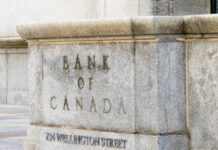The Chinese stocks extended gains on Monday as China announced more stimulus measures and investors rushed to buy before the markets closed for national holiday today. The CSI 300 index jumped more than 8% on Monday and was up by a whopping 26% in six sessions. The Chinese stimulus measures would normally bring joy to the global markets, say 5 years ago. But interestingly, the US markets have barely reacted to the Chinese stimulus measures. The S&P500 gained barely 1% over the same period. The message is that investors think that what happens in China has increasingly less impact on the health of the global economy.
But overall, the month of September wasn’t as bad as everybody feared. The S&P500 finished the month with a 2% advance, at fresh ATH, the Dow Jones gained 1.85% and Nasdaq 100 gained 2.50% over the same month, all thanks to the Federal Reserve (Fed) which delivered a surprise 50bp cut to an economy that didn’t need it. And now Jerome Powell looks like he is willing to take a bit of that pressure off the market. He said at a speech yesterday that the US economy remains strong and that the Fed is in no rush to cut the interest rates. Maybe the Fed Chief is worried about the ripple effects of the Chinese stimulus measures on inflation? Iron ore prices recovered nearly half of this year’s losses in just six sessions, and copper futures were sent higher during the Chinese stock rally, even though the positive move was not as straightforward as the one we saw on iron ore prices. Good news – for inflation expectations – is that oil bulls were not in attendance over the past week. But if the Chinese stimulus measures work, energy and commodity prices should continue to see the benefits and that’s inflationary.
US port strikes
45’000 people are expected to walk out of their jobs in the US East and Gulf coasts today, and that could impact about 50% of US imports, including bananas, other exotic fruits, packaged food, retail items, medicine, meat, marine transportation and carmakers, etc… The cost of the US port strikes on the US economy are estimated between $4.5 to 7.5bn every week, according to Oxford Economics. That kind of pressure on supply chains is also inflationary.
The bad news is that the Biden administration is not willing to take a side in this dispute. Supply chain disruptions will cost the US economy big and put pressure on prices at a time the Fed had half-declared victory over inflation, but the administration is not willing to side with the ocean carriers either that made record profits on the back of Covid disruptions over the past 4 years. There may not be a quick fix.
More hawkish Fed, more dovish ECB
The US 2-year yield jumped above the 3.60% level on worry that the Fed may not pull out another 50bp from its that when it meets next month, and the probability of a 50bp cut declined sharply to 38%, from above 55% before Powell’s cautious speech on Monday. The US dollar index rebounded from the lowest levels in a year, and the EURUSD was offered near the 1.12 mark. The selloff wasn’t only triggered by a broadly stronger US dollar but also by the Eurozone’s own news and data. French PM announced plans to increase taxes and the latest CPI update showed that the German inflation also dipped below the European Central Bank’s (ECB) 2% target (as it has been the case for France and Spain). The aggregate CPI update for the Eurozone is due this morning and is expected to confirm that inflation in the Eurozone has well slipped below the 2% policy target. In other words, the ECB has little reason not to announce another rate cut in the October meeting. The ECB Chief Lagarde is giving a few hints that there will be more in the store for this month. She said that the ECB is becoming ‘more optimistic to get inflation under control’ and that we will see that in the October decision. As such, the markets now price in an 80% chance for a 25bp reduction from the ECB on 17th of October.
The rising dovish expectations for the ECB combined to a more balanced outlook for the Fed should keep the EURUSD under pressure. The next bearish targets stand at 1.1070, the minor 23.6% Fibonacci retracement on April to now rally, 1.10 psychological support and 1.0980, the major 38.2% Fibonacci retracement that should distinguish between the actual positive trend and a medium-term bearish reversal. Potentially soft US jobs numbers are the biggest risk to the bearish EURUSD outlook. Any weakness in the US jobs data will revive the Fed cut expectations and send the US dollar lower across the board and the latter could prevent the EURUSD from trading lower.














